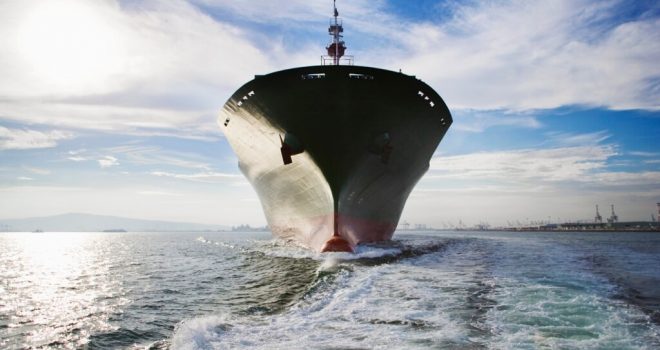ESRS E5 And The Circular Economy: A Business Perspective On Turning Data Into Strategy

When evaluating a business and looking at the growing stack of mandatory sustainability regulations, the Corporate Sustainability Reporting Directive (CSRD) can feel overwhelming.
Among its detailed guidelines and hefty nine disclosure requirements, the European Sustainability Reporting System (ESRS) E5: Resource Use and Circular Economy has a difficult dichotomy to swallow; it is challenging to understand and report on, but may also be the most powerful and valuable to companies.
Why? Because beyond adding another line in an ESG report, E5 focuses on how businesses fundamentally manage resources; what is bought, how products are designed, how they are sold, and what happens when they leave a customer’s hands. This is where compliance meets strategy.
Why ESRS E5 Matters for Business
Global data makes the business case clear:
- Material extraction accounts for 90% of biodiversity loss and 50% of greenhouse gas emissions (UNEP, 2019). That means our supply chains, not just our factories, carry most of the environmental weight.
- Municipal waste could reach 3.8 billion tonnes by 2050 (UNEP, 2024). Disposal costs will rise, regulations will tighten, and landfill will become an economic liability.
- E-waste hit 62 million tonnes in 2022 (UNITAR, 2024). For electronics companies, that’s both a reputational risk and a lost revenue stream from unrecovered materials.
These are not abstract statistics. They point to risks that show up in procurement costs, regulatory exposure, investor questions and even customer expectations. ESRS E5 makes these risks visible through disclosure.
Which Businesses Need to Report?
Not every company is immediately subject to ESRS E5. Under CSRD, reporting is required for:
- Large EU companies that meet two of the following three criteria:
-
- €50 million net turnover or more
- €25 million or more in assets
- 250+ employees
- Listed SMEs (with lighter requirements and longer phase-in periods).
- Non-EU companies generating more than €150 million turnover in the EU, with at least one subsidiary or branch in the region.
This means that medium-to-large manufacturers, retailers, technological firms and resource-intensive companies will increasingly be drawn into reporting. For smaller firms supplying these businesses, pressure will rise indirectly as larger customers will require resource and circularity data.
Which Sectors Are Most Impacted?
While ESRS E5 applies broadly, certain sectors will feel its weight most strongly:
- Manufacturing and electronics: due to material intensity, e-waste, and complex supply chains.
- Construction and real estate: linked to high raw material use (cement, steel, timber) and significant demolition waste.
- Retail and consumer goods: facing scrutiny on packaging waste, product design, and take-back schemes.
- Automotive and transport: where metals, plastics, and batteries present both risks and opportunities for circular innovation.
- Food and beverage: with growing attention on packaging, waste streams, and resource efficiency.
For these sectors, ESRS E5 applies beyond compliance and can be a competitive differentiator. However, even service-based sectors are expected to think about resource use in their operations and across their value chains.
The Stepping Stone: Life Cycle Assessment
The question every business leader asks is: Where to start?
The most practical answer: With a Life Cycle Assessment (LCA).
LCAs are the backbone of ESRS E5 reporting because they show, with evidence, where the biggest impacts occur. They serve three business functions:
- Baseline and hotspots: Revealing whether impacts lie in raw material sourcing, production, logistics, use or end-of-life.
- Scenario planning: Testing if for example, recycled aluminium, modular parts, or other design shifts genuinely reduce impacts.
- Reporting confidence: Generating ISO 14040/44-aligned numbers that regulators, auditors and investors trust.
According to UNEP’s Global Waste Management Outlook 2024, 38% of global municipal solid waste is improperly disposed; dumped, burned, or left unmanaged. Understanding where your materials end up is essential for credible reporting and for designing more circular products. Without LCAs, companies risk fragmented data. With LCAs, ESRS E5 becomes structured and credible, guiding both reporting and strategic decisions.
Translating ESRS E5 Into Business Language
The disclosure requirements of ESRS E5 can be summarised as:
- Policies: What is the position on resource efficiency and circularity? – Position statements on circular economy and resource efficiency.
- Actions and Resources: Which projects and partnerships are being implemented? – Funded initiatives such as product redesign, repair programmes, or supplier engagement.
- Targets: What measurable goals are in place? – Concrete, time-bound goals – for example, reducing virgin material use by 20% or achieving 50% recycled packaging by 2030.
- Metrics: What data shows progress – tonnes of virgin vs recycled inputs, design for reuse, waste avoided? – Quantitative indicators, such as virgin vs recycled inputs, share of products designed for circular use or tonnes of waste avoided.
This makes clear that ESRS E5 isn’t just an environmental tick-box; it touches procurement, supply chain, design and financial strategy.
The Business Lens: Treat ESRS E5 as a Business Opportunity
While ESRS E5 is a compliance requirement, it also offers clear business advantages:
- Cost reduction from lower material use and waste treatment.
- Innovation through circular products and services (e.g. leasing, resale, refurbishment).
- Risk management by reducing exposure to volatile commodity prices.
- Investor trust by demonstrating alignment with EU’s circular economy policy and global sustainability goals.
Emerging Steps for Businesses
For companies undertaking reporting for the first time, certain recommendations warrant particular attention.
- Run an LCA on one flagship product or business unit. Don’t wait for perfect data; start with what you have. It gives you the baseline and credibility.
- Map your resource flows. Know what comes in (virgin vs recycled), where it’s used, and where it goes at end-of-life.
- Set one tangible target. For example: “Increase recycled content in packaging to 60% by 2028.” Ambition grows once you have taken the first step.
- Engage your suppliers. They hold most of the data you need, especially on raw materials. Early collaboration avoids last-minute compliance scrambles.
- Build a reporting workflow. Treat E5 data like financial data: version control, audit trails, consistency across business units.
How Tunley Environmental can support?
For many businesses, ESRS E5 feels like uncharted territory. Internal teams often face data gaps, complex supplier networks, and uncertainty over methodologies. External expertise can make the difference between reactive compliance and strategic advantage. This is where Tunley provides clarity and support.
Tunley supports organisations by:
- Conducting Life Cycle Assessments (LCAs): Delivering ISO-aligned, defensible data to identify hotspots and quantify impacts.
- Building custom ESRS E5 reporting frameworks that align with CSRD requirements while integrating into existing business processes.
- Building supplier engagement strategies: Securing upstream data that is critical for E5 reporting.
- Turning technical findings into business insights: Connecting circular economy reporting with risk reduction, cost savings and innovative opportunities.
- Offering audit-ready documentation and assurance, reducing compliance risk and enhancing investor confidence.
Conclusion: Compliance as Strategy
ESRS E5 is more than a regulatory obligation. It is a mirror, showing how resource dependent businesses truly are. Approached with the right tools; particularly LCAs, strong supplier collaboration, and robust reporting system, companies can meet disclosure requirements and at the same time unlock efficiency gains, reduce risks, and discover new revenue opportunities. Companies that embrace E5 early will not only meet compliance requirements but also secure investor trust and unlock opportunities in a resource-constrained future.
Yashy Raghoo Luchmun, Sustainability Scientist, at Tunley Environmental
References
- UNEP (2019). Global Resources Outlook 2019: Natural Resources for the Future We Want.
- UNEP (2024). Global Waste Management Outlook 2024.
- OECD (2019). Global Material Resources Outlook to 2060.
- UNITAR (2024). Global E-Waste Monitor 2024.




